
Official Edgar Rice Burroughs Tribute and Weekly Webzine Site
Since 1996 ~ Over 15,000 Webpages in Archive
Volume 8069
THE CORRUPT CHICAGO OF
THE MUCKER ~ THE EFFICIENCY EXPERT ~ THE GIRL FROM FARRIS'S
BY
ROBERT ALLEN LUPTON

The rowdy, corrupt, and wide-open Chicago of Edgar Rice Burroughs’ youth played an important part in three of his stories, The Mucker, The Efficiency Expert, and The Girl From Farris’s. At some level, two of those stories, The Efficiency Expert and The Girl From Farris’s could legitimately claimed to be ventures into the muckraking genre, a term, that just for the record, was coined by President Theodore Roosevelt in 1906.
Roosevelt
intended the term to be pejorative when he quoted The Pilgrim’s Progress, “The
man with the muckrake has no way to look but down.” The word changed meaning
over the years and became a favorable expression meaning one who exposed social
concerns and fearless attacked corruption and bad behavior without regard for
personal consequences.
In the two stories mentioned, Burroughs presents the corruption in the Chicago government, its courts, and its police. He presents example after example and lets the reader reach his/her conclusions.
But
was the Chicago of the two stories a reality, or was it understated or
exaggerated? To find out, we’ll have to look at prostitution in Chicago from
the early 1900s until when Burroughs wrote the two stories, The
Efficiency Expert in 1919, and The Girl From
Farris’s in 1916.
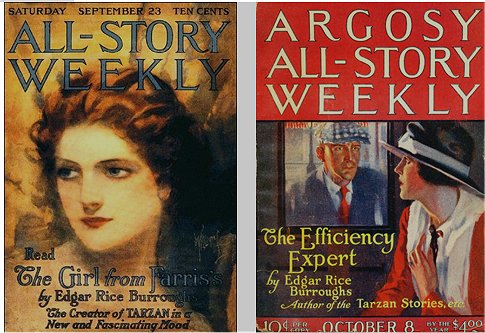
Let’s set the stage with a quote from the Ovid Demaris
book, Captive City. From the moment of its incorporation
as a city in 1837, Chicago has been systematically seduced, looted, and
pilloried by an aeonian horde of venal politicians, mercenary businessmen, and
sadistic gangsters. Nothing has changed in more than 130 years.
Next, a quotation from Irwin Porges, “In ‘The Girl
from Harris's' Ed adopts the role of social reformer, commenting bluntly and
witheringly about the alliance, in Chicago, between certain vice interests,
scheming politicians, and powerful real estate groups and property owners. In
addition, through his portrait of a hypocritical clergyman he offers a caustic
view of religious do-gooders and of society's narrowly puritanical standards.
In The Girl From Farris’s, Maggie Lynch
is arrested as a material witness against the owner of Farris’s, a bar and
brothel. Farris’s is in all probability a reference to the real Freiberg’s
Dance Hall, about which we’ll learn more later. Additionally, another brothel
is mentioned, the Beverly Club, the sound-alike name for the
most famous brothel in Chicago, the Everleigh Club. Located on
South Dearborn Street and operated by two sisters, Ada and Minna, the club was
described by the Vice Commission as the most famous and luxurious house of
prostitution in the country. The gold cuspidors were said to cost over $600
each. After the club was closed, Minna said that state legislators were always
entertained free of charge.
The sisters retired with an estimated $1 million in cash and traveled in Europe, then eventually changed their name back to Lester and settled in New York City. When their brothel business closed, Ada was 45 years old and Minna was 47 years old.
Minna, always the more outspoken of the two, responded
philosophically, stating "If the Mayor says we must close, that settles
it...I'll close up shop and walk out with a smile on my face." And so
they did. She later stated, "If it weren't for married men, we couldn't
have carried on at all, and if it weren't for cheating married women, we could
have made another million."
The club is pictured below.
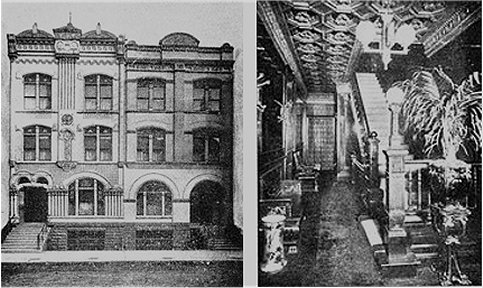
Minna Everleigh eventually testified against corrupt
Chicago aldermen "Bathhouse"
John Coughlin and "Hinky
Dink" Kenna. Although Everleigh
announced she would make her testimony public, threats by "Big
Jim" Colosimo to kill Minna and her
sister if the testimony were made public kept her silent. Nevertheless, Chief
Justice Harry Olson of Chicago's Municipal Court released her testimony that
outlined the schedule of graft due to the aldermen in return for allowing operations
to continue in the Levee District.
The Levee District was the red-light district of Chicago
for almost thirty years, from the 1880s until it was shut down in 1912.
Prostitution was legal in the Windy City until 1905. In addition to the
high-class Everleigh Club, where the women earned from $100 to $400 per week,
the equivalent of $3500.00 to $10,000 a week, other well-known establishments
were The House of All Nations, The Bucket of Blood, The Sapphos,
and Freiberg’s Dance Hall, where two city councilors lived
(Kenna and Coughlin). Freiberg’s was thought to practice kidnapping and forced
prostitution. The Bucket of Blood and the Everleigh sisters are pictured.
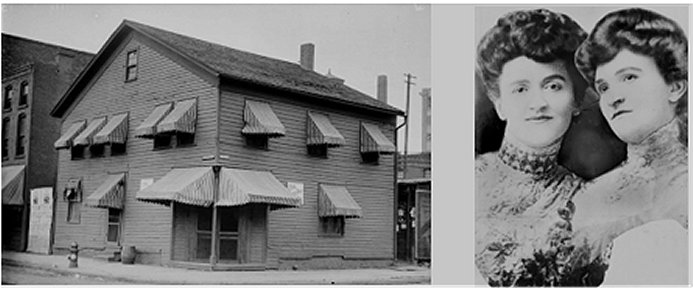
Nearby was Bed Bug Row,
downscale houses of ill repute, the most famous of which was The Little Green
House. Prices for service on Beg Bug Row were said to be as low as twenty-five
cents. The Little Green House is pictured below.
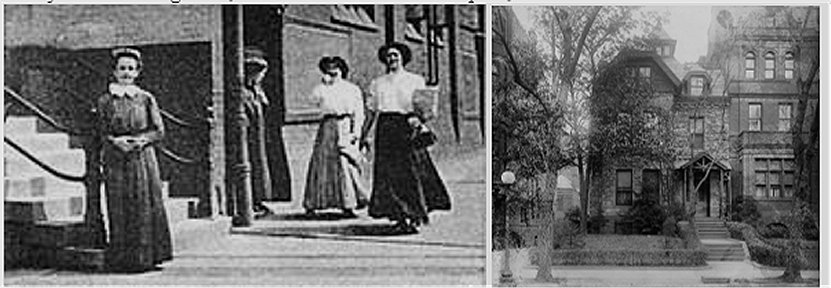
In cooperation with the Chicago
Outfit, aka The Mob, corrupt city councilors "Hinky
Dink" Michael Kenna and "Bathhouse"
John Coughlin, precipitated the rapid rise of vice in the district.
From 1893 the pair organized a protection racket in which game parlors and
brothels in The Levee had to pay protection money. Kenna and Coughlin formed a
group of corrupt city councilors called "Gray Wolves", which was
active from 1890 to 1930.
Beginning in about 1903, Maurice
Van Bever and Big Jim Colosimo engaged in the trafficking of young prostitutes
who were scheduled to become so-called "cadets" on a five-year
rotation between brothels. From there, the girls descend to working at hour
hotels and then street prostitution. Colosimo and Van Bever lead a "White
Slave Ring", where their victims are often young girls from rural areas,
lured to Chicago by the promise of marriage. They were then raped ("broken
in") by the cadets. The girls suffered a martyrdom of drug abuse,
beatings, and rape. Only a few manage to free themselves from it. Many die
prematurely from alcohol and drug abuse, as well as venereal
diseases. Van Bever’s brothel, the Paris, is pictured below.
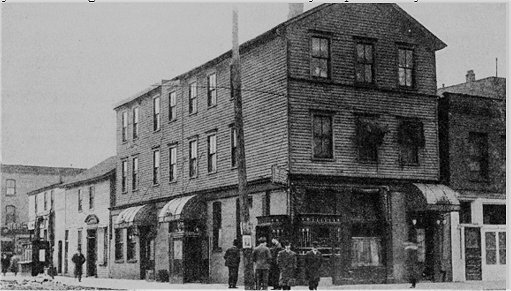
In order to receive protection,
Levee inhabitants would attend the biggest event in the district, the
annual First Ward Ball. There, Levee residents gathered to celebrate
the triumphs brought to them by "Hinky Dink" Kenna and
"Bathhouse" Coughlin. Madams, corrupt businessmen, dance-hall owners,
saloon owners, prostitutes, brothel owners, and gamblers attended the event to
support these aldermen. The money raised came from the purchase of tickets to
the event and alcohol.
When anti-vice reformers
protested the ball, Kenna justified it as benefiting the people in the district
through educational and community programs. The First Ward Ball of 1908 was the
most significant because it was the last one to be attended by the Levee's most
prominent figures. That year, anti-vice reformers tried to stop the ball by
bombing its venue, The Coliseum. The ball was uninterrupted, however, in 1909,
anti-vice reformers worked towards getting the city to revoke the event's
alcohol license. They succeeded, and only about 3,000 people attended, less
than a quarter of the attendance at the previous balls. The first photo
that follows is of Big Jim Colosimo and the second features the two city
counselors, Kenna and Coughlin – who lived in a brothel.
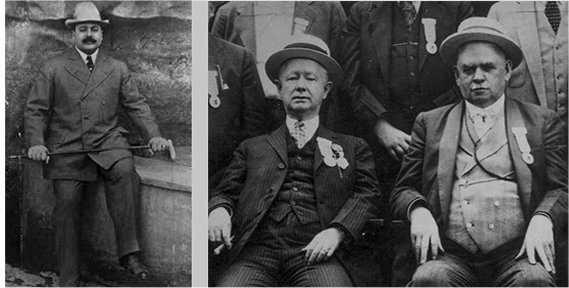
On October 3, 1911, the state's
attorney issued warrants for 135 people associated with the Levee,
including Big Jim Colosimo, Ed Weiss, Roy Jones, and Vic Shaw. The
warrants shut down halls, saloons, and brothels. Many people were arrested
within the brothels. Word spread about corruption in the government, and on
October 24, 1911, Mayor Carter
Harrison ordered the closure of the Everleigh Club. It was shut down
the following day. Many businesses in the Levee District closed in 1911, but
the district held on for two more years. One of the last brothels to close was
Freiberg's Dance Hall, which celebrated its last night on August 24, 1914.
Did prostitution in Chicago come
to an end on that day? Of course, it didn’t, but the heyday of the Levee
District came to an end a few months after Edgar Rice Burroughs finished
writing The Girl From Farris’s on March 19, 1914.
I didn’t mention most of the
legion of people who were involved in the prostitution trade during this
period, but what happened to the people from the Levee District that I did
mention? City Councilor Coughlin remained in office for many years, dying of pneumonia
in 1938. He remained a powerful ward boss until the day he died.
Kenna, who had a great amount of
influence almost nationwide, was elected unopposed to replace him. Kenna, who
had lived in a bar/brothel was a lifetime teetotaler. He died in 1946, a
millionaire. His heirs fought over his estate. Although Kenna left his
heirs $33,000 to be used to erect a mausoleum for his remains to repose
in, his heirs took all of the money and bought him an $85 tombstone instead. Big
Jim Colosimo was assassinated in 1920. Contract killer Frankie Yale allegedly
traveled from New York to Chicago and personally killed longtime gang boss
Colosimo.
Maurice Van Bever spent time in
and out of jail, but I can’t find out what happened to him. The Everleigh
Sisters retired with over $1,000,000 and spent years in Europe before settling
in New York City. Minna died in New York City in 1948 and Ada lived to the age
of 93 and died within a hundred miles of her birthplace in Virginia.
Edgar Rice Burroughs went on to
become possibly the most successful writer in the world. The illustrations
below begin with the headpiece from the newspaper serialization of TGFF. An
illustration by William Stout. An unauthorized edition of “The Efficiency
Expert. The headpiece for the first pulp installment of “The Efficiency Expert”
by Roger Morrison. An unauthorized combo edition of “The Girl From Farris’s and
“The Oakdale Affair.” Burroughs Bulletin #39, “The Girl from Farris’s.” House
of Greystoke edition of “The Efficiency Expert.”

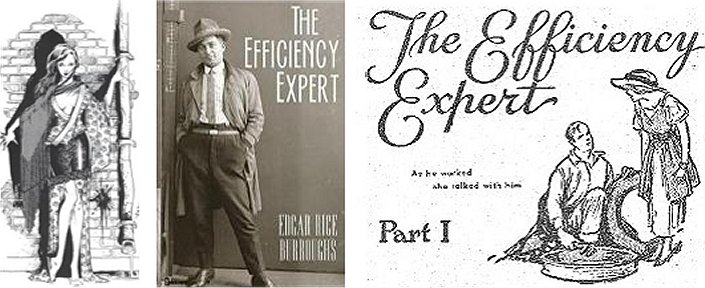
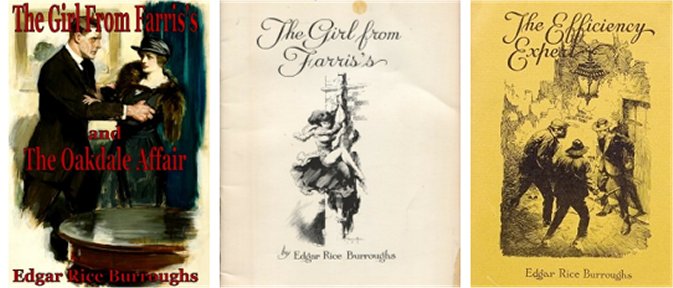


![]()

![]()
BILL
HILLMAN
Visit
our thousands of other sites at:
BILL
AND SUE-ON HILLMAN ECLECTIC STUDIO
ERB
Text, ERB Images and Tarzan® are ©Edgar Rice Burroughs, Inc.-
All Rights Reserved.
All
Original Work ©1996-2025 by Bill Hillman and/or Contributing Authors/Owners
No
part of this web site may be reproduced without permission from the respective
owners.